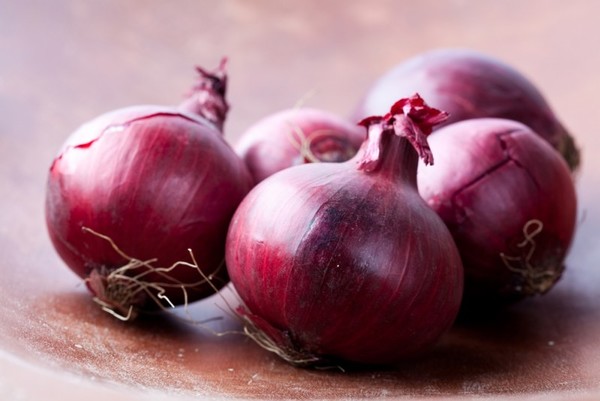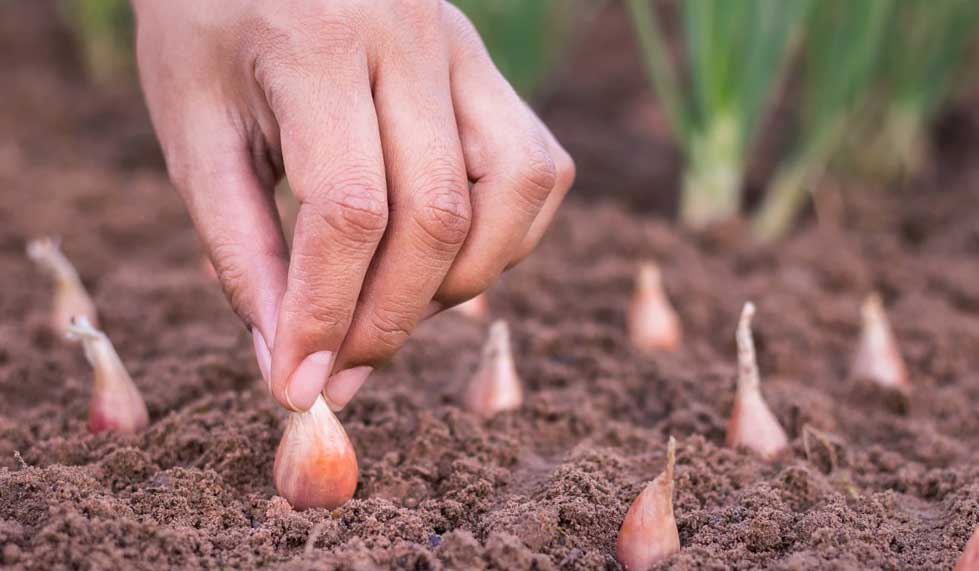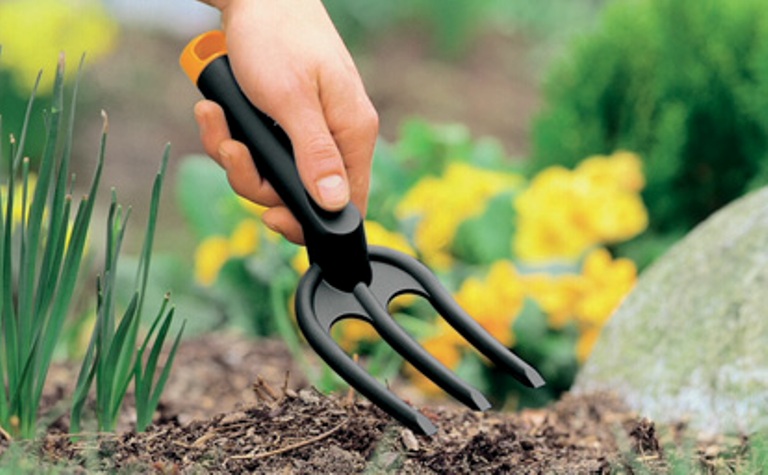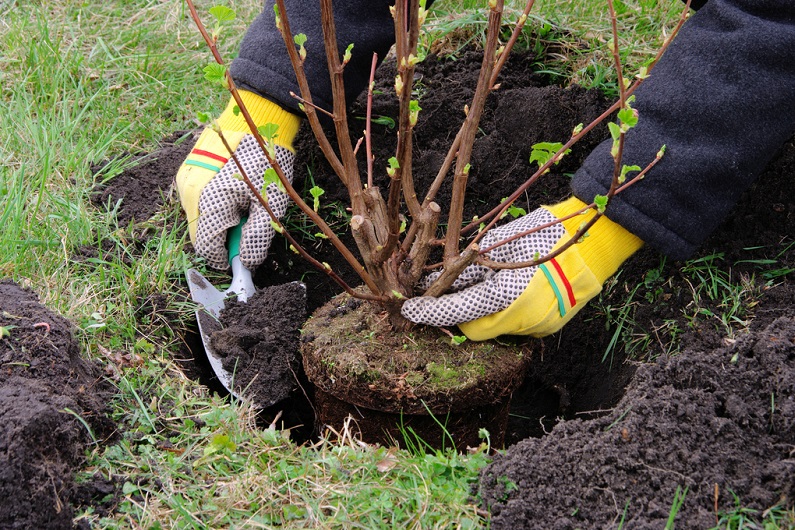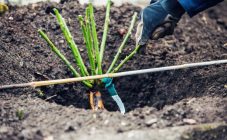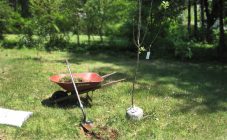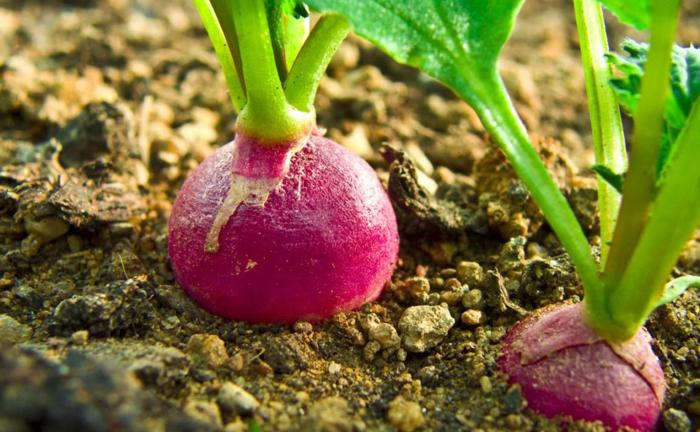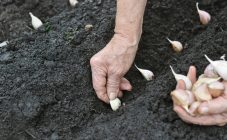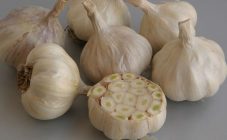Content:
Onions with a rich red skin color are no less popular than the golden one familiar to everyone. Its main difference is its mild taste without bitterness and a high content of antioxidants. Thanks to the latter property, the plant is used even for medicinal purposes. Planting red onions in the spring has its own characteristics, which must be taken into account in order to obtain a bountiful harvest of high quality.
Onions are native to Southwest Asia, where they were first grown. Now the area of its growth has spread to all regions, many new varieties and varieties have been bred. In central Russia, red onion can be grown, but its taste characteristics are significantly different from those that were cultivated in the south, namely in the Crimea.
Depending on the variety and growing conditions, the skin of the onion can be colored reddish or even dark purple. Such a plant is widely used in cooking and has a huge supply of substances useful for the human body.
Features of the variety
Many varieties of red onions are now known, each of which has its own characteristics. They are classified into spicy, medium-hot, and sweet types. Plants are adapted for growing in different climatic zones, have excellent keeping quality, yield and demanding care. As a rule, red varieties are not suitable for long-term storage and are used mainly for fresh consumption and for preparing salads.
Dates for planting red onions
The spring season for the gardener begins with the cultivation of the beds. It is also necessary to determine the correct time for planting crops so that possible night frosts do not cause damage. As a rule, seedlings are planted in open ground only when the soil temperature is at least 12 ° C. Previously, doing this was simply impractical.
Planting red onions on a head in early spring is fraught with the fact that, due to low temperatures, the plant will actively increase the green mass, but the heads are formed poorly, as a result of which the yield is significantly reduced. Also, due to the cold, shooting begins with the subsequent formation of seeds, weakening the head and taking up a significant part of the nutrients. A full-fledged bulb may never form during the growing season.
Planting red onions in the spring in the middle lane is done around the beginning of May. In a southern climate, work is done a couple of weeks earlier, but in the north, planting material is sent to the garden no earlier than in mid-May.
Soil preparation
Before planting red onions, it is necessary to carry out preparatory work on the site. Better to do this in the fall. A snowy winter will help not only to kill pests and pathogens, but also to saturate the soil with moisture.For planting onions, it is preferable to set aside an area where nightshades, legumes or cabbage previously grew. The plant grows well and shows excellent yields on loamy soils and chernozems with a neutral acidity level and rich in nutrients.
In the spring, before planting the seeds, they dig in the bed again, carefully break up the clods and drag them. If the soil has an increased acidity level, then wood ash or dolomite flour is preliminarily introduced. Clay soil is poorly suited for growing red onions. Before planting, a mixture of river sand and peat should be added to it, and then plowed. The site should be well lit without shade. Tall trees and shrubs should not grow nearby. It is good to place onion beds next to carrot beds.
Selection and preparation of planting material
Salad red onion, the cultivation of which attracts summer residents more and more every year, gives a good harvest only if all the conditions of agricultural technology and the rules of crop rotation are observed. Step-by-step instruction on planting this plant as the first point recommends sorting the seed.
The smallest bulbs, up to 1 cm in diameter, are planted first. They are suitable only for obtaining greens. Heads larger than 2 cm in diameter are also not suitable for growing future crops, because they have a high probability of throwing out arrows and forming seeds. They can be used to get nigella and grow sets in the coming season. They are disembarked last. Large heads of red onions can be grown from sets, with a diameter of 1 to 2 cm. They should be planted a couple of weeks after the smallest heads. Bulb material with signs of diseases, damaged or dry, which cannot be used for planting, is pre-selected.
In order to minimize the risk of arrows appearing, it is recommended to warm up the seedlings before planting. This is done in several ways. A couple of weeks before the intended planting on the beds, onion planting material is brought into a warm room with a temperature of 20-25 ° C. If it is possible to place the seeds in a warmer place with a temperature of + 35 ° C (for example, on a battery), then the heating time is reduced to three days. In this case, it is important to prevent overheating so that the bulbs do not burst into flame. If there is no time for such procedures at all, then the seeds are placed in a container with water heated to 50 ° C and kept there for 15 minutes, after which they are transferred to a container with cold water and kept there for the same amount of time. After the performed procedures, the bulbs should be dried.
Before planting red onions in the beds, it must be disinfected in any way possible. You can soak the bulbs in a saline solution for half an hour (1 tablespoon of salt per 1 liter of water). Also, for 15 minutes, the sets are kept in a strong solution of potassium permanganate, after which they are thoroughly washed under running water and dried. For the prevention of fungal diseases, the seeds are soaked for 15 minutes in a solution of copper sulfate (for 5 liters of water, 0.5 teaspoon of vitriol), and then washed with clean water. At the end of the preparation of the bulbs for planting, they are placed in a solution of complex fertilizer for a quarter of an hour, which is purchased in advance at a gardening store.
Landing features
Before planting red onions, the previously prepared area is leveled to prevent water stagnation. After that, grooves are made across, up to 5 cm deep. The distance between them is left 25 cm. Between the bulbs themselves, the space left depends on their size. Most often, it is from 5 to 10 cm, so that in the future you do not have to thin out the plantings or not get a crop of small heads.
A layer of earth or humus (up to 2 cm) is poured over the plantings of red onions. It is not worth watering the garden bed, since in early spring the soil already contains a sufficient amount of moisture.
Care features
Caring for red onions does not cause much trouble for the gardener. The crop requires a good level of lighting, regular watering and loosening, and timely weed removal. The beds are watered about once a week, depending on weather conditions.
Additional watering is required in severe drought conditions when feathers change color and bend. After each irrigation, it is required to loosen the soil. A couple of weeks before the expected harvest, watering of red onions is completely stopped. The heads must form a certain number of scales and dry out, otherwise they will rot.
For the entire growing season, onion plantings are fed with mullein solution 3 times. For the first time, the soil is watered with it even before planting the seedlings, then when the feather reaches a height of 10 cm. The third dressing is carried out during the period when the size of the bulbs reaches the size of a walnut.
Advantages and disadvantages
Gardeners who have their own house and plot and plan to grow red onions want to know about its main advantages. These include:
- unpretentiousness and undemanding varieties in care;
- high productivity;
- increased content of substances and microelements useful for the human body;
- aesthetic appearance;
- universal use of the crop;
- excellent taste;
- lack of bitterness;
- the ability to harvest in any climate.
The disadvantage of such varieties, in comparison with ordinary onions, is their unsuitability for long-term storage. It can also be difficult for summer residents to get the planting material of the desired variety in a certain amount, and its price turns out to be much higher than the usual golden seed. But this does not in any way reduce the demand for red onions, and gardeners are increasingly striving to have it on their site.
The main advantage of this variety is the absence of bitterness and pungency, which is necessarily inherent in its golden counterpart, and a high content of antioxidants and vitamins. Those who managed to discover the benefits of red onions will definitely plant them on their site in subsequent seasons. Even inexperienced beginners can cope with the cultivation of such a useful plant.
